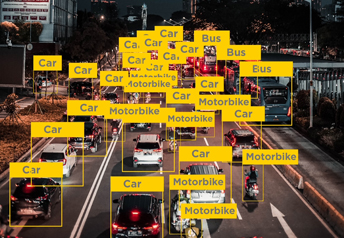There are three broad types of video analytics technology available in server-based, VMS, CCTV solutions. In order of accuracy and capability, they are Neural Analytics; Deep Learning and Artificial Intelligence (DL and AI) Analytics; and Binary Large Object, or BLOB.
Digifort supports all three types, as well as integrating with the analytics in third-party network recorders; ‘all-in-one’ analytics boxes; and cameras. We asked Nick Bowden, Managing Director of Security Buying Group, supplying and supporting the Digifort VMS (video management software) platform in the UK, to discuss their cost performance benefits.
The most accurate and capable analytics option is neural. However, this is the most expensive because the software costs more and it requires high performance hardware to run. The other analytics options may be less capable, but they are perfectly suitable for many CCTV applications, where budgets are tighter. Digifort is a technology partner of Nvidia. Its analytics software is optimised to run on Nvidia Graphics Processing Units (GPUs), fitted in a server alongside the operating system (OS) processor. Where brake horse power (BHP) in cars is a measure of performance, so in VA servers it is ‘CUDA cores’. Even a low-cost Nvidia GPU will add over 600 CUDA cores to the server and GPUs of 4000 cores or more are common place and affordable. The GPU performance is distributed across multiple analytics channels which are allocated to the video channels, but not locked together, allowing flexible and dynamic resource allocation to analytics in a system, as required. NVR, boxed and camera solutions simply do not have this performance or flexibility.
GPU processing performance is doubling each year, for the same cost, so we can expect to benefit from yet more, huge performance improvements and cost reductions in server-based CCTV systems. Also, dedicating the GPU cores to analytics and the server cores to the OS and video processing is good practice for optimal server performance, as each accesses its respective processor resources differently.
1.Neural Analytics
Neural analytics is a relative newcomer to mainstream CCTV. Like human recognition, many different objects within a camera view are identified from a library of known objects, learnt over time. Rules can be applied for individual or combinations of objects with real-time alarms or events triggered for an operator response. Digifort has three neural networks to choose from:
– General objects such as vehicles, humans and many more categories.
– Crime, for identifying weapons, suspicious arm positioning and movement (like aiming a gun).
– Industrial, for identifying people wearing helmets, masks, goggles and PPE.
Neural analytics lends itself to ‘occupancy’ type applications, such as the number of cars in a car park or people in a queue. It recognises the objects ‘seen’ in the camera view, or a zone, and counts them. Multiple zones from one or many cameras can be added or subtracted to give an aggregate site count and scene backgrounds are ignored, as they are not recognised objects, reducing false alarms.
2.Deep Learning and Artificial Intelligence (DL and AI)
DL and AI analytics most commonly recognise people, vehicles and objects and their behaviours. As a camera scene is ‘learnt’, the DL / AI analytics self-calibrates to learn the scene backgrounds and avoid false alarms. Many rules can be applied individually or concurrently, such as presence, entry, exit, appearance, disappearance of an object; direction, speed and tailgating filters; counting over a line; and stopped, loitering, abandoned and removed object. Many NVRs, boxed analytics and embedded camera solutions use versions of this analytics type, or BLOB, as they simply do not have the processing capability required for neural.
3.Binary Large Object / BLOB
This is the most basic level of analytics, recognising object size (number of pixels), motion detection and some simple analytics like line crossing. It is a low-cost option, ideal for driving motion or event recording, to save on storage.
Analytics performance and hardware overhead
Neural Analytics often use 2MP (1920×1080 pixel) video streams for processing, even if the recorded ‘evidential’ stream in the VMS is 4MP, 8MP or more. The other analytics types usually use D1 (720×576 pixels) or less. Clearly the scene detail at 1080p is about five times greater than D1, hence the accuracy, but also the processing overhead. A 1000 core GPU will typically process around 20x neural channels and a 4000 core GPU around 50x channels. By comparison, DL and AI analytics can double the channels processed on the same hardware and BLOB will double again.
A word of warning, some boxed analytics only record the analytics processing stream at D1, without a concurrent HR stream, meaning that analytics video is recorded at low resolution – so do check if you go down this route. There is a place for each type of analytics, when cost and performance are factored in. However, neural analytics outperforms them all in terms of accuracy and capability; its cost to deploy is reducing as server and GPU costs drop; and it is future proof, allowing GPU and performance / accuracy upgrades in line with continuous, neural analytics software development.
For more about the Digifort VMS, contact the Security Buying Group on: 0161 480 5922, [email protected] or www.securitybuyinggroup.co.uk.









